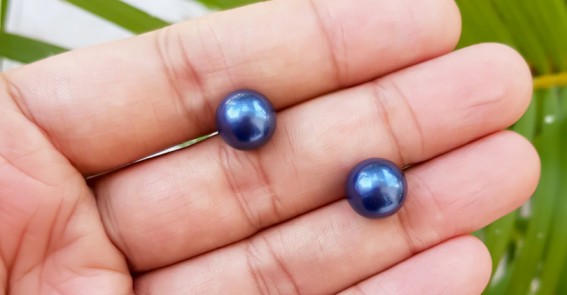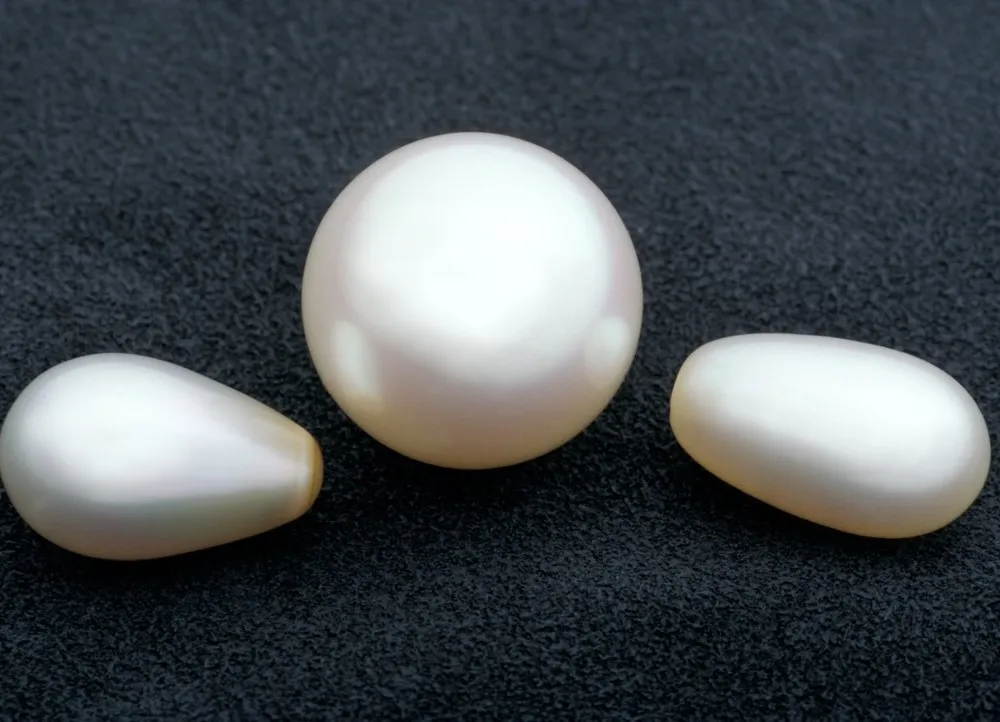When someone talks of pearls, the first stone most likely that springs to mind is either a perfectly round white or somewhat off-white stone. Though one of the most sought-after, this kind is hardly the only one available. pearls are white, black, almost any hue in between. While certain colors are produced artificially, know about the How Do Oysters Make Colored Pearls.
Though unfounded, the popular notion that oysters create pearls from a single grain of sand is very interesting folklore. Actually, oysters are quite skilled in secreting sand that routinely finds its way into their shells in sandy seas. Conversely, it is true that an oyster can develop a pearl from a foreign particle, irritant, or even organism.
Most crystals develop organically over millions of years from the heat and pressure of Earth. Pearls vary, though. Among the natural jewels created in the mussels, clams, and mollusks are these ones.
Pearl colors range from what? Variations in hue abound for cultivated pearls: pink, green, purple, blue, white, peach, and black. Not all of that is A few of these incredible treasures also feature fantastic colorful tones.
Still, have you ever pondered how oysters create colorful pearls? This is the essence of this blog post. Continue reading then as we discuss how oysters create colorful pearls.
How Do Oysters Make Colored Pearls: Unveiling the Mystery of Oysters and Colored Pearls

What is nacre or mother of pearl made of?
The glossy material that forms the internal lining of the oyster or mollusks shell is called mother of pearl informally. Offically, this material is called nacre. Please take note that this nacre is a special combination of minerals produced by oysters and mollusks.
The epithelial cells found in the mollusks' lining secret little platelets. The basis of the nacre are these platelets. Besides, these platelets consist of calcium carbonate. Consequently, the structure of the platelets resembles the light waves when the mollusks release them.
Read Also: Pink Pearls Are Classic Ones NYT: A Classic Choice for Modern Fashion
How pearls are made by oysters?
Oysters are bivalues, everyone knows. Two valves—or sections—make up the oyster's shell. Only a unique elastic ligament keeps both valves together. Keeping the valves open helps too so that oysters may eat.
First of all, you need know oysters' anatomy to appreciate how they produce pearls. An oyster comprises mostly the mouth, stomach, gut, heart, mantle, gills, and abductor muscles.
A foreign element falling between the shell and mantle into the oyster forms pearl. It irritates the mantle; the oyster suffers a splinter. When the oyster gets a splinter, it seeks to shield itself from the irritant.
How can oysters produce different color pearls?
How then do pearls receive their color? Three main elements, then, help to define the oyster pearl colors. Here are:
the sort of oyster
There are nacre layers with
The layer thickness of nacre
Every one of these trace components exists in an oyster's aquatic surroundings. By introducing tissue from another oyster into the host oyster, pearl harvesters can also affect the pearl color.
This mechanism is carried out alongside the shell nucleus. Now a blend of overtone, radiance, and base color determines the pearl's color. Simply said, the pearl color will be better and the brightness will appear more the thicker the layer of the nacre is.
Moreover, weaker nacre usually produces less overtones and milky-appearing pearls. Translucent nacre coats piling themselves causes a pearl to shine. Apart from this, occasionally cultured pearls are dyed. See a specialist to learn about the manufacturing process of coloured pearls.
The Iridescence Originates in Nacre
Although it isn't precisely a "color," the iridescence of any pearl is among its most arresting characteristics. This is a natural occurrence whereby, from many angles or under many kinds of light, the surface of a pearl seems to change color. This similar phenomena also exists in objects including soap bubbles, butterfly wings, and some bird wings.
In pearls, iridescence results from the layers of nacre accumulating around an irritant within a mollusk. Though translucent and crystal-like, nacre produces a stunning play of color in the resultant pearl as the layers stack up. The resultant gem will be more vibrantly colored the thicker the nacre is.
The substance that keeps a pearl's layers together can affect color.
Conchiolin, a material sometimes used as biological glue, holds the layers of nacre that develop during the formation of a pearl together. The conchiolin could be naturally brown, gray, black, red or another color colored. This pigment is seen through the pearl's crystalline layers to give the surface of the pearl the impression of many hues.
Overtones come from Aragonite Platelets.
Aragonite platelets, microscopic thin, semi-transparent crystals, also abound in the layers that comprise pearls. Comprising the prismatic layers of the pearl, they have hexagonal form. White light strikes a pearl and refracts back toward the viewer in its whole range. This lets one see in the pearl tones of red, orange, yellow, green, blue, indigo, and violet. The specific color(s) you observe in the pearl are determined by its aragonite platelets.
Conclusion
Including vibrant freshwater pearls among your jewelry-making tools will help you to let yourself create original and stunning works of art. Choose the colors you most prefer and enjoy experimenting to produce designs you love.
Read Also: Vintage Womans Damask Fashion: A Timeless Choice for Elegant Women
FAQs: How Do Oysters Make Colored Pearls

How do pearls get their colors?
Structural colors—that is, the shine and color of pearls— come from several reflections in a nanolayered structure of nacre, sometimes known as mother of pearl.
Why are oyster shells different colors?
Two main elements affecting color are growing location and minerals or nutrients in the water. Additionally influencing the patterns, frequency or intensity of color an oyster generates is genetics.
Why does an oyster make a pearl?
Freshwater mussels and saltwater oysters create pearls as a natural defense against an irritation like a parasite breaking through their fragile bodies. Materials that also comprise the oyster's shell, aragonite and conchiolin, How Do Oysters Make Colored Pearls.








